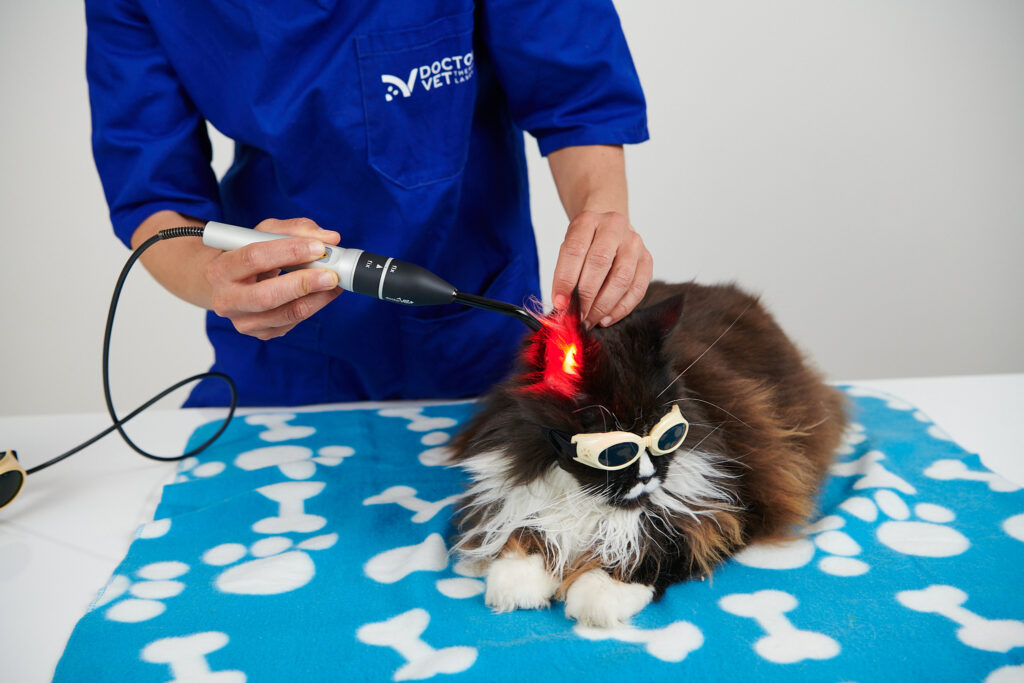The anatomy and physiology of the feline ear are different to those of dogs. Chronic problems are therefore less common in dogs because many of them have more erect ears1. Otitis media or interna in dogs occurs following the advance of bacterial infection in an otitis externa. In cats, on the other hand, it occurs following inflammatory proliferation or ascending infections or dysfunctions of the ear canal2.
This otitis occurs due to hyperplasia of the epithelium, cells increase secretion activity, inflammatory cells appear, oedema appears and fibroblast activity increases with the accumulation of collagen, creating an ooze that collects in this area3.
Patients present head tilt and may present peripheral and central vestibulopathy when the otitis has spread extensively..

Seeing is believing!
Book a demo now to learn how DoctorVet works!
One of the most frequent causes of otitis media are inflammatory polyps, which may be related to secondary bacteremia or herpesvirus and calicivirus (the Abyssinian has a greater predisposition). Another cause is an infection of the rhinopharynx by bacteria or virus, with an ascending infection in the ear. The most common include Streptococcus, Staphylococcus, Pseudomonas, Bacteroides, Fusobacterium, Mycoplasma and Bordetella. Neoplasia (adenocarcinoma most commonly) can cause otitis media4.
A correct diagnosis is therefore essential, based on a physical examination and complementary testing, such as cytology, cultures, histopathology, x-rays, CT or MRI.
Treatment may vary depending on the source of the otitis, ranging from topical and/or oral treatment to surgery based on the type of lesions presented by the patient.
The inflammation control effect5 and antimicrobial effect of laser therapy (including bacteria, fungi and viruses)6,7,8 make laser therapy an effective therapeutic option, discarding its use in cases where neoplasia is diagnosed.
Photodynamic therapy becomes a therapeutic option in cases of otitis media in gerbils9, as shown by the article published by Jung et al. (2009) in which they observed the benefits of photodynamic therapy in three types of antibiotic-resistant bacteria.
DoctorVet has various protocols that can be of use for the treatment of this otitis. We recommend combining the inflammation and infection protocols (surface and/or deep tissue, depending on the application).
For rhinopharynx infections, we also recommend treatment in this area. The spotter treatment head can be used for direct treatment inside the inner ear (select surface infection in this case) or externally by following the path of the ear canal (select deep tissue infection) with the zoom treatment head.
When choosing the latter option, the scanning application technique should be used in contact mode (provide the patient can tolerate it, otherwise use the non-contact mode).
The treatment schedule may vary according to seriousness from 1-3 sessions/week.


Via dell’Impresa, 1
36040 Brendola (VI)
VAT 02558810244
C.R. VI 240226
© Copyright 2016-2021 LAMBDA S.p.A. | Privacy Policy